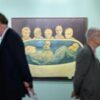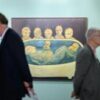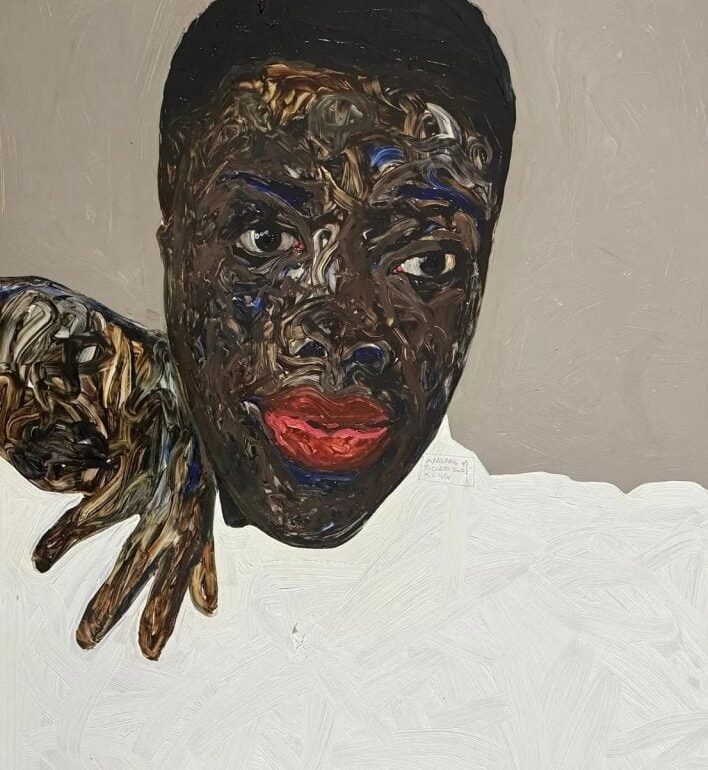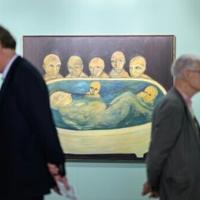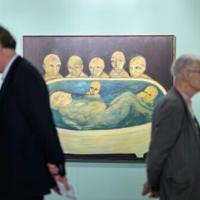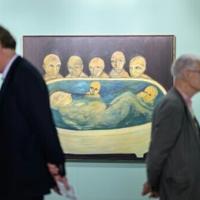A version of this article originally appeared in The Back Room, our lively recap funneling only the week’s must-know art industry intel into a nimble read you’ll actually enjoy. Artnet News Pro members get exclusive access—subscribe now to receive the newsletter in your inbox every Friday.
Alongside the growth of art fairs in Africa in recent years, international interest in contemporary African artists has risen sharply… some would say to unsustainable heights.
Amid a global contraction—fine art auction sales fell by around 27 percent in 2024, according to Artnet’s analytics—has Africa’s hot market been left out in the cold? Let’s take a look.
Sales Sink
Like the rest of the art market, auction sales in Africa were down during the past two years, which were tough ones for the global economy. According to the Artnet Price Database, total fine-art sales at auction on the continent were just under $17 million in 2024, the lowest figure in 10 years. (North American and European totals were also at or near their lowest levels in a decade.)
Global total sales value of art by African-born artists at auction in the genres of Modern, postwar, contemporary, and ultra-contemporary peaked at $197 million in 2022. In 2023, that figure fell to $113.4 million and, in 2024, sales totaled $77.2 million, a further 36 percent decline year-on-year.
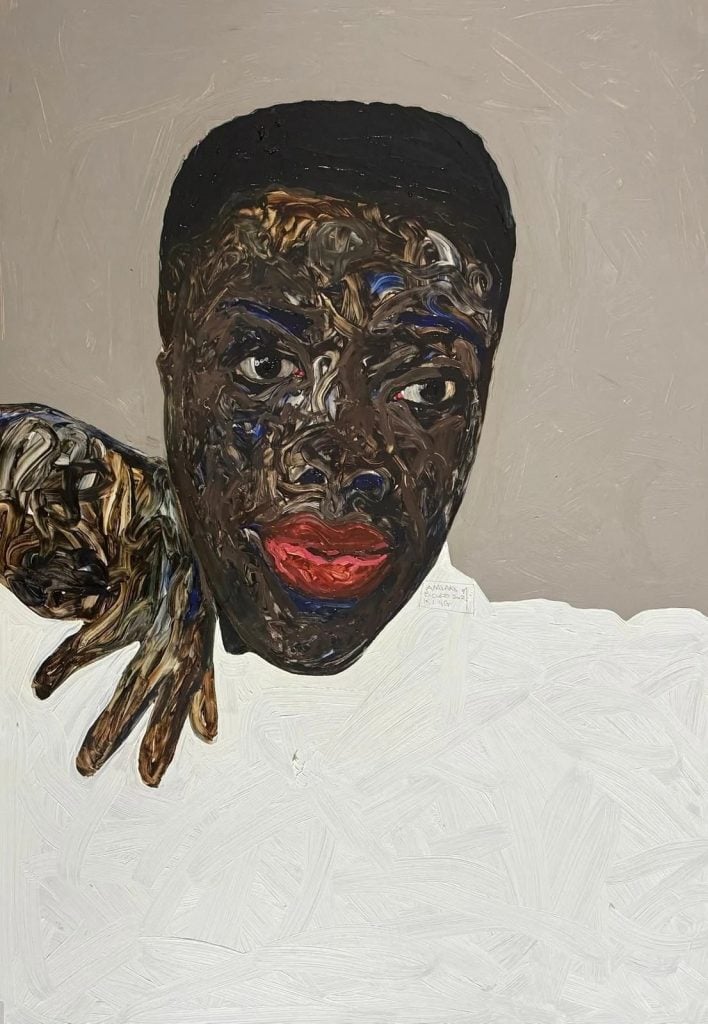
Amoako Boafo’s Blank stare (2021) was acquired by Tate at 1-54 Marrakech. Courtesy of Gallery 1957, © Amoako Boafo.
Sotheby’s closed its dedicated African art department in London at the end of last year, amid global layoffs. A spokesperson said the auction house remains “committed” to the category and will continue to offer Modern and contemporary African art in its sales.
Surprising Strengths
However, 2024 stats from the auction house Strauss and Co., which is headquartered in Cape Town, South Africa, offer a more hopeful picture. According to the firm, its sales were up 5.6 percent year on year, despite the global market downturn, making it the most successful year since its founding in 2008. There was also a “significant increase” in private sales, according to its chairman, Frank Kilbourn, which accounted for 19 percent of the house’s total revenue.
International buyers now represent 20 percent of bidders—perhaps resulting from the company’s efforts to build its profile abroad. Last year, it opened an office in London. And a vast majority (nearly 80 percent) of lots were traded digitally, suggesting that a more global and diverse audience is now buying African art.
Beyond the secondary market, Investec Cape Town Art Fair, which opens on February 21, is boasting its largest edition yet with 125 exhibitors, nearly a quarter of which are new, and a record-high number of international participants.
Shifts in Taste
The recent boom in ultra-contemporary art has catapulted emerging African artists to global stardom. Take 40-year-old Ghanaian painter Amako Boafo, whose auction record was set in 2021, when Hands Up (2018) sold for over $3.4 million at Christie’s—more than 700 percent its estimate. His 2021 canvas Blank Stare was acquired last week by Tate at the sixth edition of the 1-54 Marrakech fair.
As the ultra-contemporary market cools, however, experts say buyers have shifted attention toward Modernists from the African continent. Collectors who may have entered through the contemporary sector are now searching out 20th-century artists, according to Alistair Meredith, a specialist at Strauss and Co. The priciest work sold by the auction house last year was Irma Stern’s The Smoker (1945), a portrait from the artist’s prized Zanzibar period, which made $952,004. A survey of the artist will open at Berlin’s Brücke Museum in July.
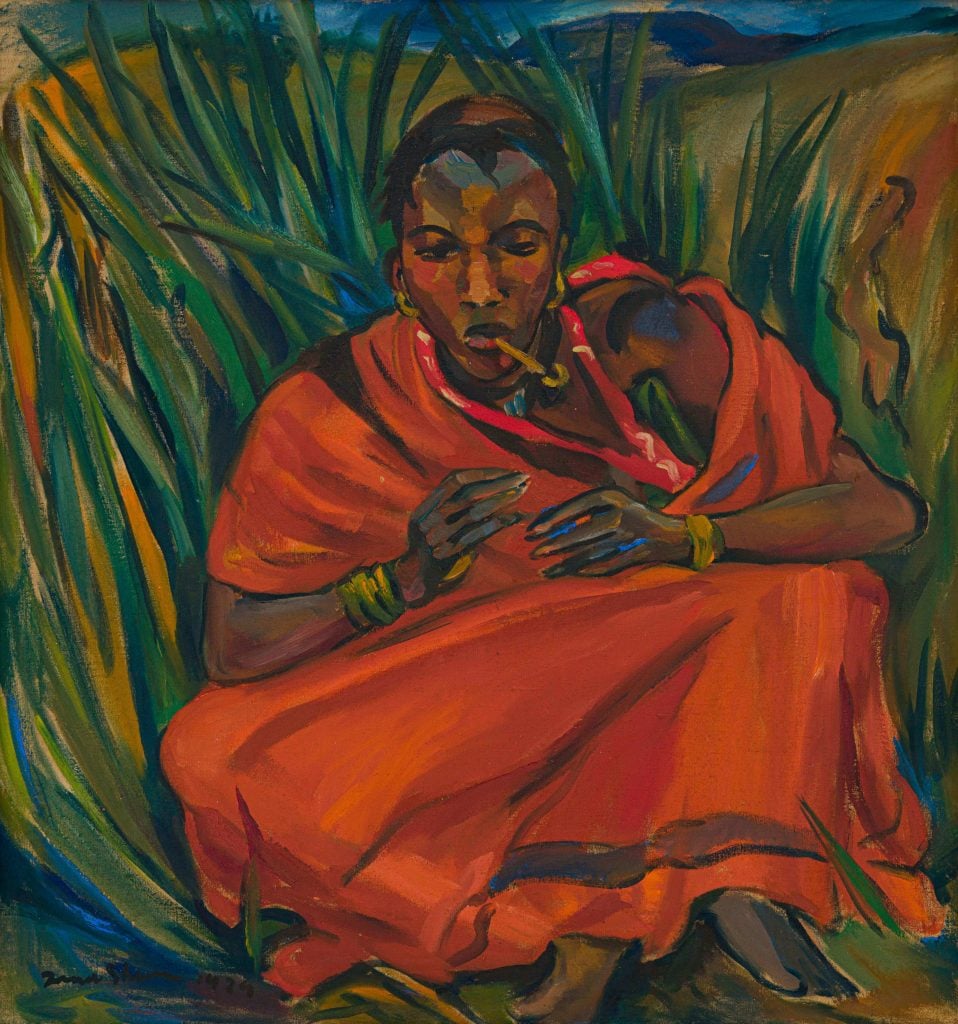
Irma Stern, The Smoker (1945). Courtesy of Strauss and Co.
While the market for Modern and contemporary African art may have grown swiftly in the last decade, its recent contraction is in line with a broader trend within the trade. Meanwhile, African artists are more visible than ever on the institutional level, internationally. Last year, the critically acclaimed Black figurative painting show “Now We See Us” traveled from Zeitz MOCAA in Cape Town to Kunstmuseum Basel, opening during Art Basel.
This year there will be several major shows dedicated to 20th- and 21st- century African artists. South African Social Realism pioneer Gerard Sekoto headlines the “Paris Noir” exhibition opening at the Centre Pompidou in Paris next month (the artist’s work was also featured in last year’s Venice Biennale) and the High Museum of Art in Atlanta will feature a survey of Ezrom Legae’s works in June, marking the midcentury sculptor and draftsman’s first museum show in the U.S. In October, Tate Modern in London will launch a major Nigerian modernism show.
These exhibitions mark a sea change in the global presence of African art, as does Koyo Kouoh’s appointment as curator of the 2026 Venice Biennale. As director of Zeitz MOCAA, she has been a champion for contemporary African art and will be the first African woman to lead the prestigious event.
This post was originally published on this site be sure to check out more of their content

